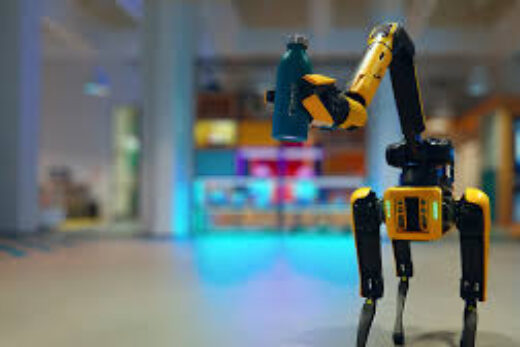Introduction
In the realm of robotics, where precision and rigid structures have long dominated, a new wave of innovation is emerging: soft robotics. Inspired by the flexibility and adaptability of biological systems, soft robots are revolutionizing the field by offering a safer and more versatile approach to human-robot interaction. This article explores the fascinating world of soft robotics, highlighting its potential applications, underlying principles, and the impact it is making in various industries.

The Soft Robotics Paradigm
Soft robotics embodies a paradigm shift in the design and construction of robots. Instead of relying on traditional rigid structures, soft robots utilize compliant materials, such as elastomers and flexible polymers, to achieve a wide range of movements and deformations. This flexibility enables them to interact with their environment and handle delicate objects with precision and care, making them ideal for scenarios that involve close human interaction.
Applications and Advancements
Soft robotics holds immense potential across various sectors, including healthcare, manufacturing, and exploration. Here are some notable applications and advancements in the field:
- Medical Assistance: Soft robots can be tailored to mimic the properties of human tissue, facilitating safer and more natural interactions between robots and patients. They can be employed in surgical procedures, rehabilitation therapies, and prosthetics, enhancing patient care and well-being.
- Collaborative Manufacturing: Soft robotic systems can work alongside humans in manufacturing environments, enabling seamless collaboration and enhancing productivity. Their compliant nature minimizes the risk of workplace injuries and allows for intricate manipulation of objects in complex assembly tasks.
- Exploration and Rescue Missions: Soft robots offer unique advantages in challenging environments, such as search and rescue operations or space exploration. Their ability to navigate through confined spaces, deform to fit irregular surfaces, and withstand extreme conditions makes them valuable tools for exploration and disaster response scenarios.
- Gripping and Manipulation: Soft robotic grippers equipped with soft sensors and actuators can delicately grasp and manipulate objects of various shapes and sizes. This is particularly beneficial in industries such as agriculture, warehousing, and food handling, where the ability to handle delicate or irregular objects is crucial.
Challenges and Future Directions
While soft robotics holds tremendous promise, it also presents unique challenges. Designing and controlling soft robots require advancements in materials science, sensing, actuation, and control strategies. The development of robust and scalable fabrication techniques for soft components is crucial to ensure widespread adoption.
Moreover, the integration of soft robots with traditional robotic systems and artificial intelligence algorithms opens avenues for exciting research on multi-modal sensing, perception, and decision-making in complex environments. The field also calls for comprehensive studies on the ethical, legal, and social implications of soft robotics, addressing concerns related to privacy, safety, and human labour displacement.
Conclusion
Soft robotics is revolutionizing human-robot interaction by reimagining the fundamental principles of robot design and construction. Its compliance and adaptability enable safer and more versatile interactions, expanding the possibilities of robotics in various domains. From healthcare to manufacturing to exploration, soft robotics has the potential to reshape industries and enhance the quality of our lives. As researchers continue to push the boundaries of this field, we eagerly anticipate the future advancements and breakthroughs that soft robotics will bring, ushering in a new era of human-robot collaboration.









